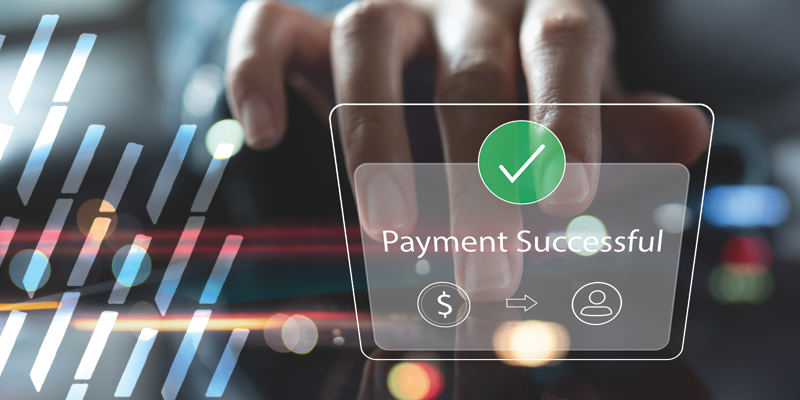Posted On: August 5, 2025 by Prevail Bank in: Banking / Money Management Digital Banking Fraud

Mobile Payments, Scams & Security: What You Need to Know Before You Tap "Send"
From splitting dinner with friends to sending thousands of dollars across the globe, online and mobile payment apps have made life easier. Services like PayPal, Venmo, and Zelle allow users to transfer money in seconds. But while the convenience is undeniable, so are the risks. As these apps grow in popularity, so do the scams targeting their users.
The Big Three: How They Work & How Safe They Are
PayPal
PayPal allows users to send money globally, and large amounts—up to $60,000 in one transaction. There's typically a delay before the funds hit the recipient’s bank, giving senders a brief window to cancel mistaken transactions. PayPal offers some buyer and fraud protections, though recovery isn't always guaranteed or immediate.
Venmo
Venmo, also owned by PayPal, is designed with a social twist—users can share payment activity with friends. While fun, this public element also makes it more attractive to scammers. Venmo is encrypted and supports multifactor authentication (MFA), but just like PayPal, once a transaction is sent, it can be hard to reverse.
Zelle
Zelle is backed by hundreds of U.S. banks and integrated into their apps, meaning it uses the same security infrastructure. It’s incredibly fast—but that also means it offers no buyer protection. If you send money to the wrong person or a scammer, it’s gone. Zelle should only be used with trusted contacts.
So, Are These Apps Safe?
Generally, yes—if used carefully. All three services use encrypted transactions and require identity verification. Most support or require MFA. But no system is foolproof, especially when human error or deception is involved. Think of these apps like digital cash: once it leaves your hands, you might not get it back.
Watch Out for the Scammers: Common Tactics
The most dangerous threat isn’t the app itself—it’s the scammers who pretend to be the app. One common example: phishing emails that look like they’re from PayPal or Venmo, warning you of a suspicious charge. These emails may ask you to call a phone number or click a link. That’s where the scam begins.
Consider this real-life example: ‘John’ received what looked like a legitimate PayPal email about a laptop purchase he never made. When he called the number provided, he was instructed to enter a code into his browser, granting remote access to his PC. Within minutes, the scammer was inside his computer, moving money between accounts and telling John to stay on the line and not to say anything to the bank.--------- Realizing what was going on, John quickly shut down his computer, contacted his bank, and changed his passwords, which helped minimize the damage.
If You Receive a Suspicious Email, Text, or Call—Do This:
- Don’t click links or call numbers in suspicious messages.
- Visit the official site or app directly to verify any claim.
- Never install software or enter codes at someone’s request.
- … unless you initiated the communication / service request. No legitimate company will ask you to install software, enter codes.
- Disconnect immediately if you gave someone access.
- Shut down your device, disconnect from the internet, and call your bank.
- Report the incident.
- Contact your bank, the payment service, and file a complaint with the Federal Trade Commission: reportfraud.ftc.gov
- Change your passwords and enable multifactor authentication (MFA).
- Prioritize your email and banking accounts. MFA adds a critical layer of security beyond passwords, blocking unauthorized logins even if credentials are stolen.
- Monitor your accounts closely.
- Look for any unusual charges or transfers.
Simple Ways to Stay Safer
- Use MFA on all payment apps and email accounts.
- Install antivirus software on all your devices. It will help block suspicious downloads, remote access attempts, and prevent hackers from taking over your system.
- Use a password manager for strong, unique logins. An electronic password manager generates and stores nearly uncrackable passwords.
- Don’t share your screen or give remote access unless you initiated the support request.
- Consider identity theft protection and data removal services to keep your personal info off the web. Identify theft protection monitors for signs of fraud and will alert you to suspicious transactions. Data removal services automate requests to delete your personal information from data brokers and people-search sites.
Final Thoughts
Digital payments are here to stay, and they’re safe—when used with care. Scammers thrive on urgency and confusion, so stay calm, double-check everything, and never be afraid to hang up or disconnect if something feels off.
Trust your instincts. A few extra seconds of caution can save you from weeks of stress.
Prevail Bank has an entire category of blogs dedicated to scams, fraud, and security. Check them out. https://www.prevail.bank/blog/category/fraud





